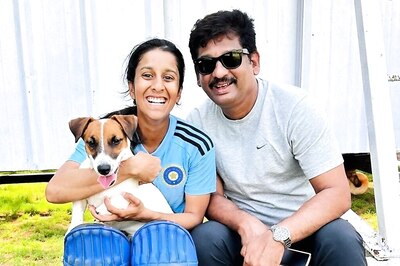
views
New Delhi: Whenever the successor to a device is launched, many of us get straight into a comparison mode to ascertain what improvements the new entrant brings along and how better it is over the last-generation model. And as expected, the recent launch of the new Moto G (third generation) has left many prospective buyers comparing the new Moto G with its predecessor. Aiming to help you make a better comparison between the two models, we bring you a list of enhancements that make the new Moto G different from the last.
1. Design: The new Moto G is based on the same design principles as the last-gen Moto G, but the redesigned sides and back make the third-gen Moto G a better-looking device than the older one. The ribbed pattern at the back - similar to the one on the swappable band of the Moto E - not only enhances its looks, but also helps in offering a smooth grip. Also, the metallic-finish frame running along the phone makes the new Moto G different from the previous model and also adds to its beauty.
2. Display: Measuring 5 inches, the new Moto G has the same 720 p display - in terms of size, screen resolution, and pixel density - as the second generation model, but it comes with an additional layer of Corning Gorilla Glass that the company had given a miss in the previous model. The addition of Gorilla Glass in the new phone is aimed at giving the phone's display extra protection and to keep it safe from scratches. Quite like the last year's model, the new phone also produces good colours and has decent viewing angles.
3. Water resistant: Unlike the predecessor, the new Moto G comes with water resistant technology - but that doesn't make it a waterproof phone in entirety. The company has made the new phone safe from splashes and accidental drops in water. It has been designed to withstand immersion in up to 3 feet of fresh water for up to 30 minutes - provided the back cover is properly sealed.
4. Cameras: With the new Moto G, Motorola has upped the megapixel count of the both the rear and front cameras from 8 megapixels and 2 megapixels to 13 megapixels and 5 megapixels, respectively. Also, the rear camera in the new Moto G is accompanied by a dual-tone LED flash, which the company says will automatically adjust to offer users natural looking skin tones and consistent vibrant colours. The older model, however, didn't have the dual LED flash.
The rear snapper on the new Moto G captures good light and produces true to life colours, but details are not as crisp as you would expect from a mid-range phone today. Photos captured with the similarly-priced Xiaomi Mi 4i and Asus ZenFone 2 are slightly more detailed. The front camera of the new Moto G, on the other hand, generates better results than the last year's model, but even this can be easily outstripped by the competition.
5. Processor and RAM: The successors usually come with a better processor and so does the new Moto G. The new mid-range contender from Motorola comes with an improved processor and a slightly faster clock speed. While the processor in the 2nd gen phone had come paired with only 1 GB of RAM, the new Moto G gives you RAM options to choose from. It comes in 1 GB and 2 GB RAM options. While it was a smooth ride with the second-generation Moto G, it's too early to comment on the performance of the new Moto G.
6. Storage: While the older Moto G had come only in the 16 GB variant, the new Moto G has been introduced in two storage options - 8GB and 16 GB. But the catch here is that the 8 GB variant comes with 1 GB of RAM, and the 16 GB with only 2 GB RAM. This means you cannot buy an 8 GB Moto G (third gen) with 2 GB of RAM or 16 GB with 1 GB RAM. Quite like the last year's model, it also has a microSD card for additional storage.
7. Battery: As against the 2070 mAh battery in the previous Moto G model, the third-gen Moto G is packed with a 2470 mAh battery - an increase of around 20 per cent. And quite like the last year, the company claims the new Moto G's battery offers a mixed usage of up to 24 hours on a single charge. We are, however, yet to test it.
8. Network: Like the older Moto G, the new Moto G also comes with dual SIM support, but this time with 4G LTE capability (on both SIMs). As part of initial launch offerings, the new Moto G comes with a couple of 4G data offers.
9. Others: The new Moto G comes with a couple of new gestures borrowed from the top-of-the-line Moto X smartphones. For instance, twist your wrist twice to launch the camera app. Also, it lets users activate the flashlight by simply flicking the wrist twice. The older Moto G was devoid of these gestures.




















Comments
0 comment